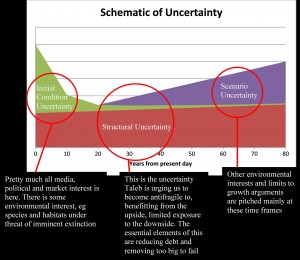 The Wizard of EIOPA is back. Gabriel Bernardino, the chairman of the European Insurance and Occupational Pensions Authority (EIOPA), outlined in May the powers he thought were necessary for EIOPA to enhance its role as a European Supervisory Authority for the insurance market. Insurers are currently busily opposing such calls.
The Wizard of EIOPA is back. Gabriel Bernardino, the chairman of the European Insurance and Occupational Pensions Authority (EIOPA), outlined in May the powers he thought were necessary for EIOPA to enhance its role as a European Supervisory Authority for the insurance market. Insurers are currently busily opposing such calls.
On 5 September, therefore, he changed tack with a speech about pensions instead, entitled Creation of a sustainable and adequate pension system in the EU and the role of EIOPA.
“The creation of an adequate, safe and sustainable pensions system is one of the key objectives of the European Union and EIOPA is committed to contribute by all means to the development of such a system,” he boomed, despite the EU’s Constitutional Treaty not mentioning pensions anywhere among its objectives. He went on to state that EIOPA approved of assets and liabilities being valued on a market consistent basis. So far, so uncontroversial.
But then he continued. “EIOPA suggested a number of elements to reinforce the governance of IORPs: for example the performance of an own risk and solvency assessment.” What? An ORSA? You mean that thing that has led the insurance industry to spend millions on consultants, conferences and which, 5 years on from when it was first mooted, is only currently fully implementable by 24% of European insurers with all of the resources available to them? (Moody’s Analytics, in their July 2013 survey of 45 European insurers, concluded that 24% of the insurers interviewed had their processes, methodologies and models in place to fulfil Pillar 2 requirements – the key one being the ORSA).
He wasn’t finished. EIOPA proposed to require defined contributions (DC) schemes to produce a Key Information Document (KID). This would contain “information about the objectives and investment policies, performance, costs and charges, contribution arrangements, a risk/reward profile and/or the time horizon adopted for the investment policy”. So, a massive amount of additional bureaucracy around the default funds in a DC scheme by the sound of it, with no appearance of understanding that members of DC schemes can choose their own investment policies, nor a word about the hottest issue in DC provision at the moment, ie the level of charges. Surely he is KIDding?
Next he carried on a bit about the “holistic balance sheet” concept, despite it having recently been kicked into the long grass for implementation by pension schemes he clearly desperately wants to bring it back if he can, before giving his interpretation of the findings of the quantitative impact study (QIS) as part of the process to advise the European Commission on the review of the IORP Directive. This boiled down to:
- Some pension schemes have surpluses, others have deficits.
- Schemes can either make up deficits by paying more contributions (“It is not unusual that future sponsor support needs to cover as much as 25% of liabilities.” Said the Wizard, with the air of a man discovering a new physical law) or by reducing benefits.
I think we can all agree that however much the QIS cost it was worth the money.
Then we moved onto the Swedish part of the speech. “I would like to take this opportunity to thank the Swedish pension industry, the Swedish pension protection scheme (PRI Pensionsgaranti) and the Swedish supervisor (Finansinspektionen) for their contributions to the QIS. Sweden was the only member state with sufficient financial assets to cover the pension liabilities as well as the solvency capital requirement. Pension funds showed on average even a substantial surplus over the SCR of 13% of liabilities. Of course, an important reason for these positive outcomes is that Sweden already imposes a prudential regime that is market consistent and risk based, by using the quarterly Traffic Light stress test. In my view, this clearly illustrates that a future European regulatory regime should be market consistent in order to ensure a comparable and realistic assessment of the financial situation of pension funds; and risk based in order to provide IORPs with the right incentives for managing risks.”
What? According to the Swedish Pension Agency’s annual report on the Swedish Pension System for 2012, it consists of a pay-as-you-go scheme (the inkomstpension) and effectively an insured personal pension (the premium pension). So it clearly illustrates precisely nothing for a defined benefit occupational pension system like that of the UK with total buy out liabilities of around £1,700 billion (according to the UK Pensions Regulator’s Purple Book for 2012). However, did I mention where this speech was taking place? Sweden.
It was time for the Wizard to return to building his empire. EIOPA need more resources, more powers and now, apparently, more of a mandate. Obviously the m-word is a bit of a problem for all European institutions but it grates on the Wizard particularly. Despite the Solvency II omnibus grinding along on the hard shoulder and the first attempt at new funding targets for occupational schemes being rebuffed, he believes that now the time is right for a foray into personal pensions. He refers to occupational pensions as “the so called 2nd pillar” which confused me at first as I thought that was the risk management part of Solvency 2. However, then I realised that it was just that Eurocrats are obsessed with pillars because now he is calling personal pensions “the so called 3rd pillar”. And he wants to run them with the same efficient competence we have come to associate with the Wizard.
The Wizard wants a new sort of personal pension known as an “EU retirement savings product”. This would avoid “the traps of the short term horizon” (ie pesky scheme members deciding they need their money earlier than EIOPA decree they can have it) and “managed using robust and modern risk management tools” (does he mean things like the stochastic techniques and Value at Risk methodologies which have shown no discernible ability to manage risk in banks to date?). Finally “it should have access to a European passport allowing for cross border selling”. There has been scope for UK occupational pension schemes to become cross border schemes for some time now. Hardly any have taken up this “opportunity” so far because it came with a requirement to immediately increase the level of funding of a defined benefit scheme to buy out level. For defined contribution schemes, as we saw with the fate of stakeholder pensions, the appropriate vehicle very much depends on the form of social security system in place, the degree of means testing and when it happens and, most importantly, how it interacts with the state pension system. One size will definitely not fit all, and I expect that the Wizard’s EU retirement savings product will remain a largely theoretical entity for this reason.
However, my favourite part of the Wizard’s speech was left until last. “It is our collective responsibility to face reality,” he offered, with no hint of irony. I fear that the Wizard’s sense of reality is more a type of magical realism where people can fly, or turn into unicorns and EU officials can regulate things they don’t understand without unintended consequences.
“Please help us to move in the right direction,” he concluded. I think we should all do precisely that, by opposing what the Wizard of EIOPA proposes for pension schemes of all kinds.














